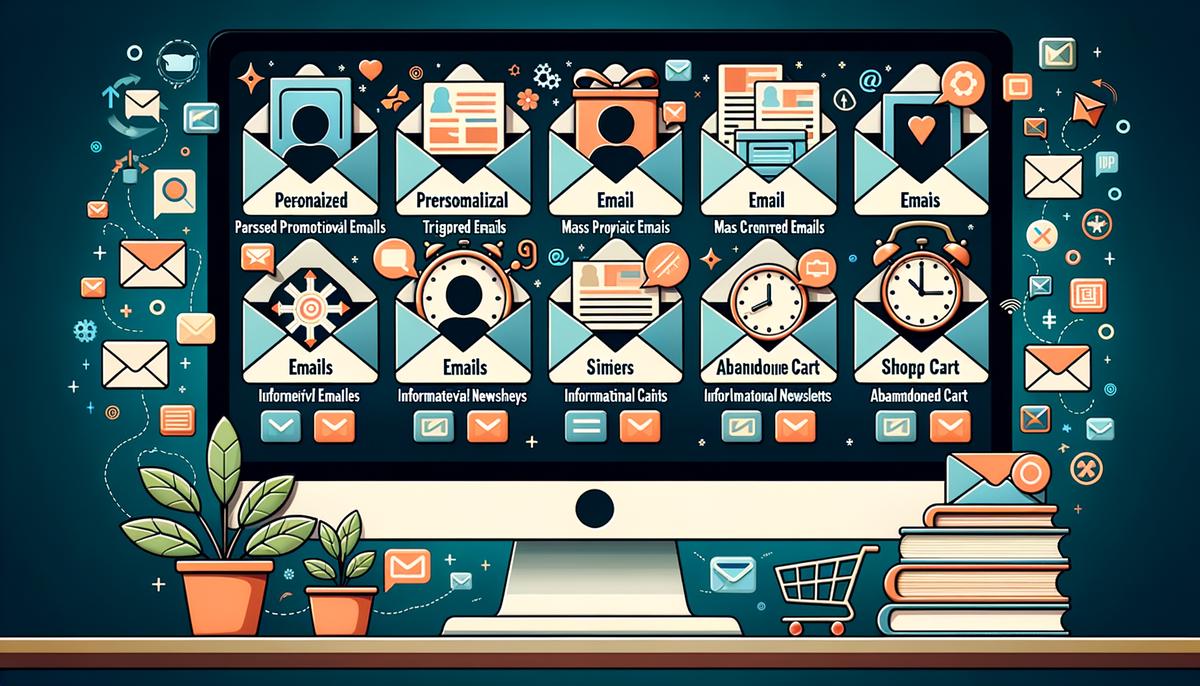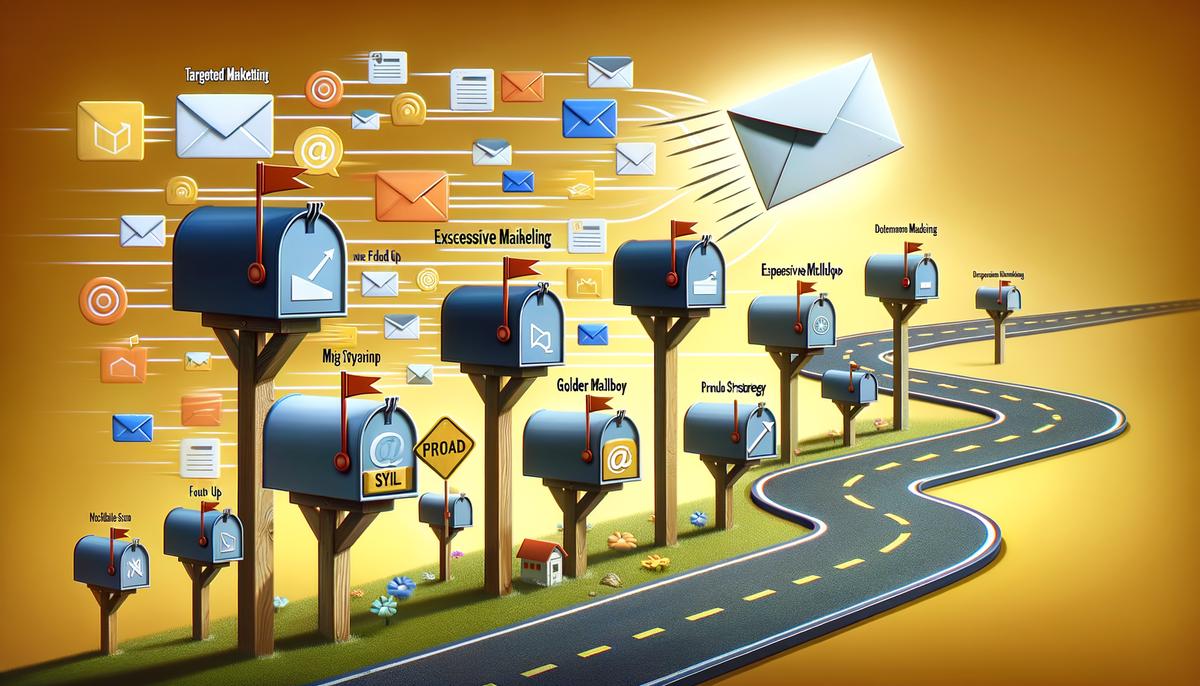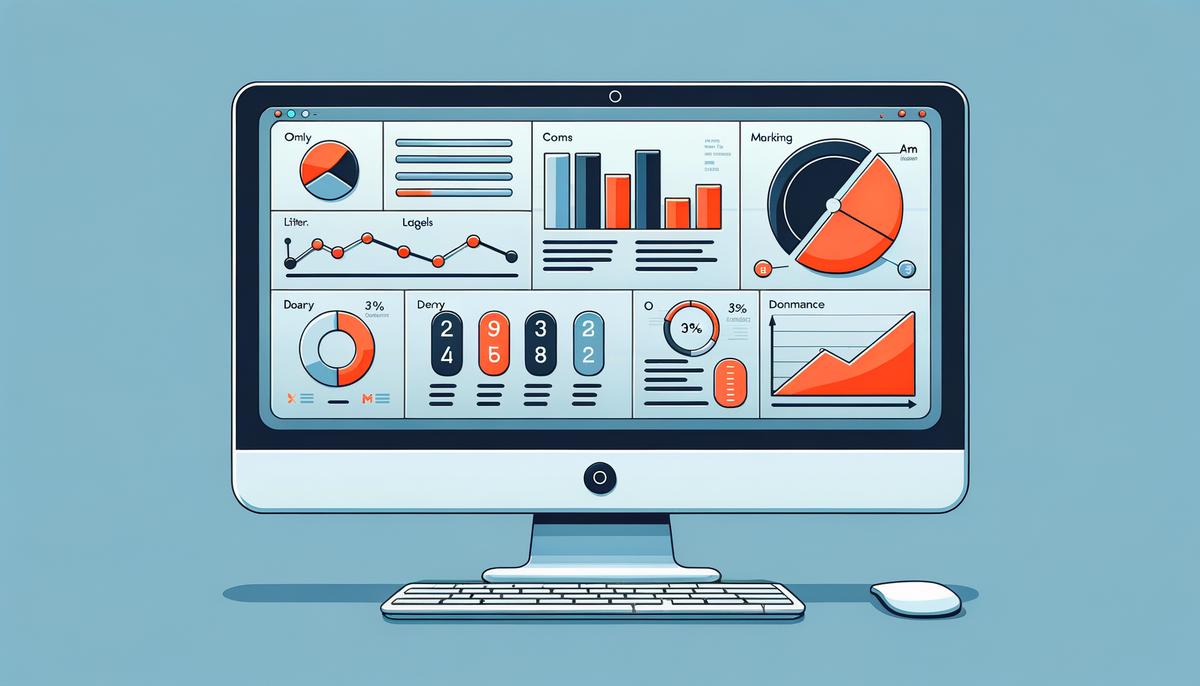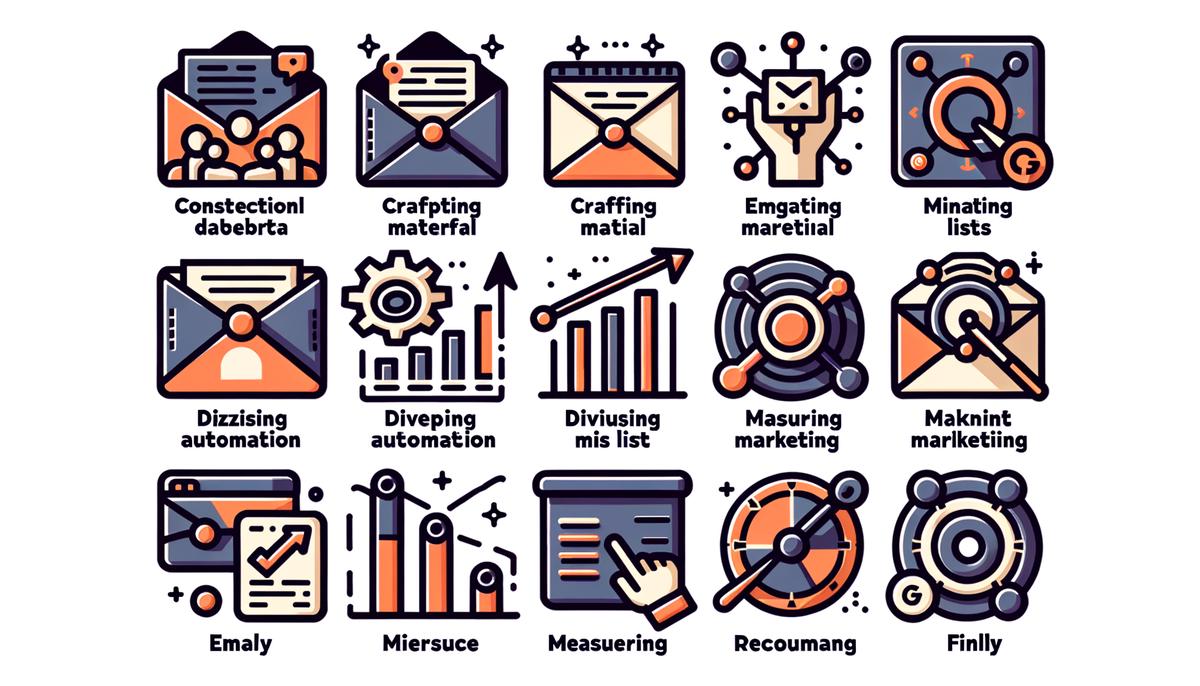Email marketing opens up a world where connecting with your audience is not just possible, but powerful and direct. Building a strong email list stands at the heart of this approach, serving as the foundation for any successful campaign. Understanding the steps to create such a list, from gaining permission to maintaining engagement, paves the way for truly impactful communication. As we explore these strategies, remember that the essence of email marketing is about fostering genuine connections and delivering value every step of the way.
Building an Email List
Starting an Email Marketing Campaign? Here’s How to Build a Strong List First
Launching into email marketing feels a bit like diving into the deep end. It’s a powerful way to connect directly with people interested in your services or products. The cornerstone? A solid email list. But how do you build one that really delivers? Let’s break it down into manageable steps so you can start on the right foot.
Understand the Basics: Permission is Key
First things first, you need people to email. Not just any people, but those who actually want to hear from you. This means getting their permission. Why? Because sending emails to someone who hasn’t opted in is not just ineffective, it can harm your reputation and even put you on the wrong side of spam laws.
Create a Sign-Up Form That Gets Noticed
Your first tool in list-building is your sign-up form. This little form is going to be your best friend. Place it where it’s easily visible on your website: the header, footer, or as a pop-up. The trick is to make it compelling. Offer a clear, irresistible reason to sign up. Maybe it’s exclusive content, a discount, or insider tips. Whatever it is, make it good.
Offer a Lead Magnet
Ever heard of a lead magnet? It’s essentially a freebie you give in exchange for an email address. Think of it as a trade. You could offer an eBook, a guide, a discount code, or anything valuable related to your niche. This not only grows your list but also attracts the type of subscribers that are most likely to engage with your content and, ultimately, convert into customers.
Promote Your Email List Everywhere
Don’t be shy about promoting your email list. Use your social media channels, your website, your business card—anywhere you have a presence. The more touchpoints you have, the more opportunities you create to grow your list.
Engage in Guest Blogging
Contributing to other blogs or platforms can be a game-changer. It puts you in front of an already engaged audience. Include your bio and a link back to your sign-up form. It’s a win-win: you provide valuable content, and in return, you tap into a new audience base.
Leverage Existing Networks
If you’ve been around for a bit, use the network you already have. Reach out personally to those who know your work and might be interested in joining your list. A personal touch goes a long way in converting acquaintances into subscribers.
Keep It Legal: The Importance of Compliance
Remember, respecting privacy laws is crucial. Make sure your sign-up process complies with laws like GDPR in Europe. This means being transparent about how you’ll use subscriber data and providing an easy way to unsubscribe.
Quality Over Quantity
A massive list sounds great, but what really matters is engagement. Focus on building a list of subscribers genuinely interested in what you have to offer. This leads to higher open and click-through rates, which is what email marketing is all about.
Get Started, Then Keep Improving
Building a solid email list doesn’t happen overnight. It’s an ongoing process that involves consistent effort and fine-tuning. Start with these steps, and you’ll be on your way to email marketing success. Remember, every big list started with a single subscriber. Yours will grow over time if you keep providing value and engaging with your audience authentically.
So there you have it—no fluff, just essential steps to kickstart your email marketing campaign with a robust list. Stick with it, and watch your digital community thrive.

Creating Compelling Content
Making your emails stand out in a crowded inbox goes beyond just getting people to sign up for your list. Here are some additional strategies to keep your emails from getting lost in the shuffle.
Craft Eye-Catching Subject Lines
First impressions matter a ton in email marketing. Your subject line is essentially your email’s handshake. It should be strong, engaging, and leave the recipient wanting more. Think of it as the headline of your email. Use curiosity, urgency, or personalization to make it irresistible. A simple “Hey [Name], you’ve got to see this!” can work wonders compared to a generic “Newsletter Update.”
Personalize Your Content
Generic emails are forgettable. Personalization makes your emails feel like they were crafted just for the reader. Use your subscriber’s name, mention their interests, or reference their last purchase. This approach shows that you value your subscribers as individuals, not just email addresses. Tools like segmentation can help you tailor your emails based on subscriber behavior or demographics.
Keep Your Emails Visually Appealing
A wall of text is daunting. Break it up with headers, bullet points, or images—anything that makes your email easier to scan. People often check their emails on the go, so your message needs to be understandable at a glance. Including relevant images or GIFs can also add a fun touch, making your emails more enjoyable and engaging.
Offer Real Value
Every email you send should offer something worthwhile to your reader. Whether it’s an insightful tip, a special discount, or an entertaining read, there needs to be a takeaway. Providing consistent value builds trust and keeps subscribers coming back for more. It’s not just about what you want to say, but what your readers will benefit from hearing.
Encourage Interaction
Make your emails a two-way conversation by encouraging your subscribers to respond. Ask questions, solicit feedback, or simply invite them to share their thoughts. This not only increases engagement but also gives you valuable insights into your audience’s preferences. Plus, when subscribers reply, it signals to email providers that your messages are welcome and relevant, potentially boosting your future emails’ visibility.
Optimize for Mobile
With most people checking their emails on smartphones, it’s essential to ensure your emails look good on small screens. Use a responsive design that adjusts to various screen sizes. Keep your layouts simple and your text readable without having to zoom in. Remember, if your email isn’t mobile-friendly, it might get deleted or, worse, lead to an unsubscribe.
Timing is Everything
Even the best email is ineffective if it’s sent at the wrong time. Monitor your email analytics to see when your subscribers are most active. Experiment with different sending times and days to find your sweet spot. Sometimes, it’s not what you say but when you say it that makes all the difference.
By incorporating these strategies into your email marketing, you can transform your emails from just another message in the inbox to a must-read for your subscribers. It’s about understanding your audience, delivering value, and constantly refining your approach. With these tools in your arsenal, your emails will not only be seen but eagerly anticipated.

Automation and Segmentation
Shifting our focus, let’s dive into how automation and segmentation can seriously amp up your email marketing game.
For starters, automation is like having an ultra-smart robot buddy who does the heavy lifting so you can kick back (not really, but kind of). On the flip side, segmentation is all about making groups; think of it as organizing your friends based on who loves horror movies and who can’t stand them.
Why Automation Rocks
Imagine sending out thousands of emails by hand. Sounds like a nightmare, right? Automation tools swoop in to save the day. They let you schedule emails in advance, so they hit the inboxes just when your subscribers are most likely to engage. But it’s not just about saving time—automation helps maintain consistency in your messaging, ensuring your audience hears from you at just the right intervals without you stressing over a calendar.
There’s more: automation can trigger emails based on specific actions. For example, someone abandoned their cart on your site? Bam! They get a gentle reminder email nudging them to return. This isn’t just clever; it’s strategically using data to make your emails more relevant and timely.
Segmentation: The Secret Sauce
Now, onto segmentation. Not everyone on your email list is there for the same reason, which is why blasting the same message to everyone isn’t the best move. That’s where segmentation comes to play. By dividing your list based on demographics, interests, or their behavior on your site, you can tailor your emails to fit perfectly with what they’re interested in.
Picture this: you sell sports gear, and you know a chunk of your list is crazy about running while another lives for camping. Sending the runners info on the latest trail shoes and the campers tips on picking the best tent makes each email feel personal and useful. The result? Higher open rates, better engagement, and ultimately, more sales.
The Power Couple: Automation + Segmentation
When you combine automation with segmentation, you’ve got a powerhouse duo. You can automate emails that go out to specific segments, making your life easier while ensuring each subscriber feels like you’re speaking directly to them. Think automated birthday discounts, VIP access to products for your most engaged segment, or a series of welcome emails tailored to different interest groups. This level of personalization can dramatically increase engagement and loyalty.
But Wait, There’s More: Testing and Optimization
To really nail your email marketing, keep testing and tweaking. What works for one segment might not for another, and the only way to find out is through A/B testing different subject lines, email designs, and call-to-actions. Keep an eye on your data to see what’s resonating. Over time, these insights help you fine-tune your strategy for even better results.
Wrapping Up
In the world of email marketing, sending the right message to the right person at the right time isn’t just a nice-to-have, it’s a must. Automation saves you time and keeps your strategy on track, while segmentation ensures your emails hit home with each subscriber. Together, they’re your ticket to more impactful, effective email campaigns. So get out there, segment your heart out, automate like a boss, and watch your email marketing flourish.

Analyzing Email Performance
Now that we’ve covered the essentials of building and optimizing your email marketing efforts, let’s dive into how you gauge the fruits of your labor. Measuring the success of your email campaigns isn’t just about feeling good regarding the number of “opens” or “clicks” you get. It’s about understanding the real impact those emails have on your business goals. So, how do you do that? Let’s break it down:
- Open Rate: This is where you start, but it’s not the end-all. If a lot of people are opening your emails, you’re probably doing something right with your subject lines and sending them at a good time. But, keep in mind, a high open rate doesn’t directly translate to success unless it leads to further action.
- Click-Through Rate (CTR): This tells you what percentage of your audience finds your email content compelling enough to take the next step. Higher CTRs indicate that your message is resonating with your audience. It’s a good measure of engagement, but again, it’s what happens after the click that counts.
- Conversion Rate: Here’s where the rubber meets the road. How many people took the desired action after clicking through from your email? Whether it’s making a purchase, signing up for a webinar, or downloading a guide, your conversion rate is a direct indicator of your email campaign’s success in driving business outcomes.
- Bounce Rate: Not everything is about success; it’s also about identifying what’s not working. A high bounce rate (emails not reaching their destination) could indicate problems with your email list health or delivery issues. Keeping an eye on this can help you clean up your list and improve deliverability.
- List Growth Rate: While we focus a lot on how our current subscribers are reacting, it’s crucial to keep an eye on how your list is growing. This metric gives insight into the effectiveness of your list-building strategies. Growing your subscriber base is vital for long-term success.
- Unsubscribe Rate: If the unsubscribe rate is high, it’s a warning signal. This could mean your content isn’t meeting your audience’s expectations, or perhaps, they’re feeling overwhelmed by the frequency of your emails. This metric offers an opportunity to reassess and adjust your strategy.
- ROI (Return on Investment): At the end of the day, it’s about the return. Calculating the ROI of your email campaigns helps you understand if your efforts are paying off financially. This involves tracking the actions that lead to revenue after an engagement with your email and comparing that against your investment in the campaign.
- Social Shares and Forwards: This is a bonus metric. If people are sharing your emails or forwarding them to friends, that’s a good sign you’re creating highly engaging content that’s worth spreading.
- Feedback: Sometimes, the most valuable insights come directly from your audience. Pay attention to replies and feedback. What are they saying? What do they want more (or less) of? This direct line of feedback is invaluable for fine-tuning your approach.
By closely monitoring these metrics, you can get a clear picture of what’s working and what’s not in your email marketing efforts. Remember, the goal is to continuously refine and improve your campaigns for the best possible outcome. And remember, email marketing is not just a set-it-and-forget-it activity; it’s an ongoing process of learning, adjusting, and growing with your audience.

Compliance and Best Practices
Ensuring your email marketing not only reaches the inbox of your audience but also prompts them to take action, while staying within the bounds of compliance, is no small feat. So, let’s break it down into manageable steps that will guide you to achieve both effective and compliant email marketing strategies.
First off, clarity and transparency in your communication play a crucial role. When sending out emails, make it abundantly clear who you are. Your “From,” “To,” and “Reply-to” information should accurately reflect your identity or your business’s identity. This transparency is not just beneficial for building trust with your subscribers; it’s also a requirement under laws such as the CAN-SPAM Act.
Now, let’s talk about content relevance. Your emails should be relevant and valuable to your audience. This means understanding their needs and preferences and tailoring your content accordingly. A generic, one-size-fits-all approach won’t cut it. Use segmentation and personalization techniques to ensure that the content you’re sending feels specifically crafted for the recipient. This not only increases your engagement rates but also decreases the likelihood of your emails being marked as spam.
Maintaining a clean email list is another crucial step. Regularly purge your list of inactive subscribers who haven’t engaged with your emails over a defined period. This might seem counterintuitive. After all, a bigger list feels like a better list, right? However, sending to inactives can harm your sender reputation and negatively impact your delivery rates. Plus, it keeps your list healthy and compliant with subscriber expectations and privacy regulations.
Speaking of regulations, ensure that you’re up-to-date with email compliance laws in different jurisdictions. These laws can differ significantly from one region to another (like GDPR in the European Union, CASL in Canada, and others). Make sure you understand and adhere to these regulations, particularly if you have a global subscriber base. This often involves obtaining explicit consent from subscribers, providing clear unsubscribe options, and managing subscriber data responsibly.
Furthermore, be mindful about the promises you make when someone signs up to your list and ensure you can deliver on those promises. If you’ve told subscribers they’ll receive weekly tips, don’t suddenly switch to daily promotional blasts. Consistency in your email frequency and content type helps in setting the right expectations – a key factor in maintaining subscriber satisfaction and compliance with their consent.
Engage with your audience through surveys or feedback forms within your emails. This not only provides you with valuable insights into what your subscribers want but also emphasizes that you value their opinion. It’s a great way to keep your content relevant and engaging, thereby boosting the effectiveness of your email marketing campaigns.
Lastly, always be testing. Constantly experimenting with and testing different aspects of your email marketing will help you understand what works best for your audience. Be it the email design, the call to action, or the time of sending, small tweaks based on testing results can lead to significant improvements in your overall campaign performance.
By focusing on these areas, you can craft email marketing campaigns that are not only compelling and engaging for your audience but also respect their preferences and privacy, ensuring compliance with email laws and regulations. Remember, the goal is to build a lasting relationship with your subscribers by providing value and respecting their inbox – achieve this, and you’re well on your way to email marketing success.

As we wrap up, it’s clear that email marketing, with its blend of strategy and personalization, is not just about sending emails; it’s about building relationships. From the initial steps of building a list to the ongoing process of engaging your audience, every action taken is a step towards creating a lasting bond with your subscribers. By focusing on providing value, respecting privacy, and continuously optimizing your approach, you pave the way for not just a successful campaign, but a thriving digital community eagerly awaiting your next message.


